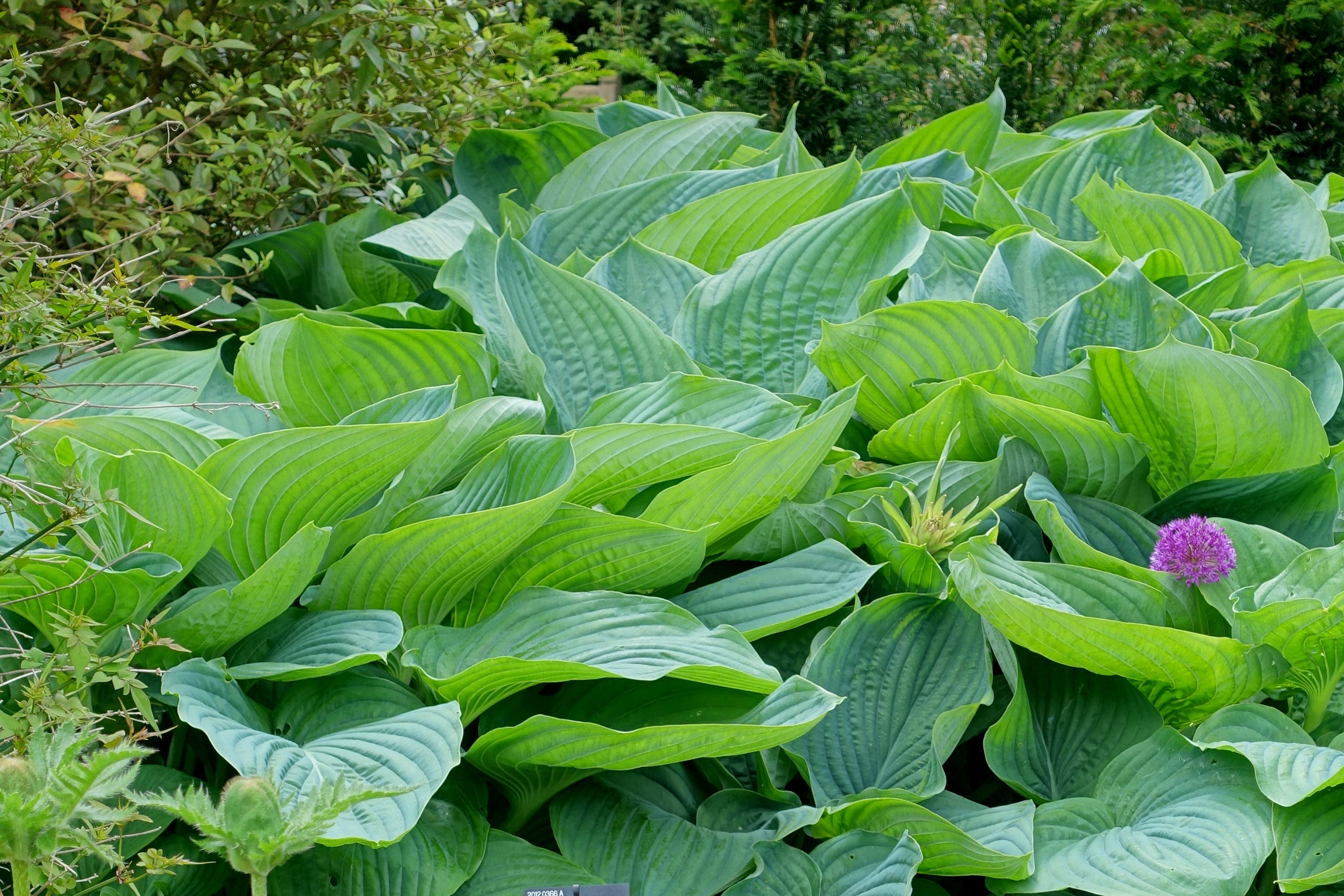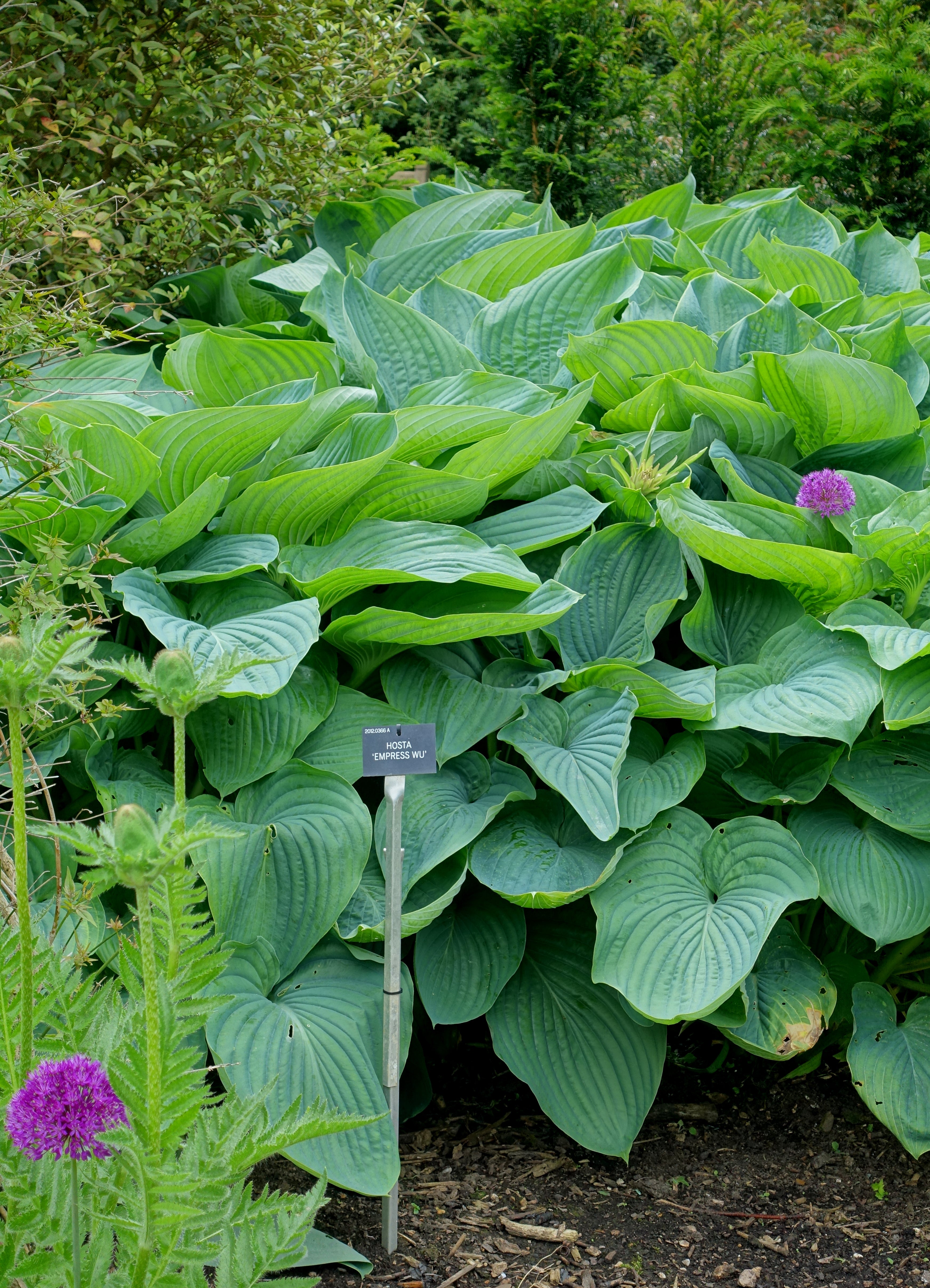Hosta 'Empress Wu'
Approx. 0.5 litre pot
About this cultivar:
Hosta 'Empress Wu' was originally a seedling of a self-pollinated H. 'Big John' which was formerly known as H. 'Xanadu Empress Wu' it was registered by Virginia and Brian Skaggs of Indiana, USA in 2008.
This is a fast growing, giant size plant that grows with dark green leaves and pale lavender flowers on tall scrapes. It is so big you Wu not believe it.....very Empress-ive....
According to The Hostapedia by Mark Zilis (2009), "...wins the championship for largest leaves of any hosta...."
The New Encyclopedia of Hostas by Diana Grenfell (2009) states: "Site in light to moderate shade in light woodland or at the back of a larger border. Allow plenty of space for eventual increase...Puckered, folded leaves. One of the largest hostas."
An article about H. 'Empress Wu' by Warren I. Pollock in The Hosta Journal (2011 Vol. 42 No. 1) quotes Brian Skaggs: "It is one of the first up...and one of the first to flower. Go figure! What is really nice is that 'Empress Wu' holds her flowers right at or just above the loftiest leaves.."
Rob Mortko in The Hosta Journal (2008 Vol. 39 No.3) says that, "This seedling was named 'Xanadu Empress Wu', now shortened to 'Empress Wu'. In case you're wondering, 'Empress Wu' was named in honor of arguably the most powerful and influential woman in world history. She was the only female emperor ever in China, reigning for half a century during the Tang Dynasty...in the 7th century A.D...In many ways, 'Empress Wu' looks just like 'Big John' -- only on steroids. In addition to size, however, it also has some other interesting differences. H. 'Empress Wu' continuously sends up scapes for nearly two months, with an overall bloom time approaching three months.”
- Position: Full sun, partial shade, full shade
- Soil: Almost any soil, grows well in Ballyrobert
- Flowers: June, July
- Other features: Grows well in Ballyrobert, Interesting Foliage or Fruit, Suitable for Container
- Hardiness: H7 - Hardy in the severest European continental climates (< -20°C), Fully hardy - grows well in Ballyrobert!
- Habit: Clump forming
- Foliage: Deciduous
- Height: 60 - 120 cm (2 - 4 ft)
- Spread: 90 - 180 cm (3 - 6 ft)
- Time to full growth: 2 to 5 years
- Plant type: Herbaceous Perennial
- Colour: Blue, green, white
- Goes well with: Cornus, ferns, allium
About this genus:
Hosta (hos-ta) is a genus of plants commonly known as plantain lilies, giboshi, or the old botanical name Funkia. The name Hosta is in honor of the Austrian botanist Nicholas Thomas Host. However most modern plants were introduced from Japan to Europe by Philipp Franz von Siebold in the mid-19th century. Don't worry about Philipp's legacy being forgotten though; he has a species named after him! (Hosta sieboldiana).
Hosta are often touted as the best shade-loving plants for the perennial garden, which is hard to dispute. In cultivation, Hosta readily mutate and have produced thousands of novel colours and leaf forms (blue, gold, and variegated are the most popular). Because of their great foliage Hosta are often thought of as foliage-only plants, but it is worth noting that many cultivars have fantastic flowers - see "Sum and Substance" and "Stained Glass" for example.
You will read that for best performance, Hosta prefer to be out of full-sun. However if you live on these islands it is doubtful you will ever get any full-sun; so you may try them in your brightest spot as long as they have some moisture. You may have had some experience with slugs and Hosta. So have we. We have found that cultivars matter (some are tastier to slugs than others) so we try to grow only slug resistant cultivars or ones that grow so many new leaves the slugs can't keep up. We've also found that by not using chemicals little mites that eat slugs eggs are allowed to multiply and keep the population down - let nature runs its course! Some slug-loving -predator should turn up eventually!
How to use Hosta? Well, if you are paranoid about slugs, place the plant in the middle or back of the border where you can only see the upper part of the plant. Slugs don't climb so high so the lower leaves that get slug damaged won't be seen! As for plant partners we put some red stemmed dog-woods near or through them (Cornus), or large leaf -ferns. It is common to put bulbs in and around Hostas; we do it with Allium. But we don't do it with Narcissi or Tulipa; they don't like the competition!




